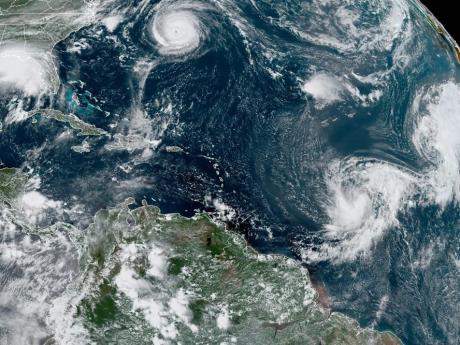Study finds cleaner air leads to more Atlantic hurricanes
Cleaner air in the United States and Europe is brewing more Atlantic hurricanes, a new US government study found.
The National Oceanic and Atmospheric Administration study links changes in regionalised air pollution across the globe to storm activity going both up and down.
A 50% decrease in pollution particles and droplets in Europe and the US is linked to a 33% increase in Atlantic storm formation in the past couple decades, while the opposite is happening in the Pacific with more pollution and fewer typhoons, according to the study published in Wednesday's Science Advances.
NOAA hurricane scientist Hiroyuki Murakami ran numerous climate computer simulations to explain change in storm activity in different parts of the globe that can't be explained by natural climate cycles and found a link to aerosol pollution from industry and cars — sulphur particles and droplets in the air that make it hard to breathe and see.
Scientists had long known that aerosol pollution cools the air, at times reducing the larger effects of greenhouse gases from the burning of fossil fuel and earlier studies mentioned it as a possibility in increase in Atlantic storms, but Murakami found it a factor around the world and a more direct link.
Hurricanes need warm water — which is warmed by the air — for fuel and are harmed by wind shear, which changes in upper level winds that can decapitate storm tops. Cleaner air in the Atlantic and dirtier air in the Pacific, from pollution in China and India, mess with both of those, Murakami said.
In the Atlantic, aerosol pollution peaked around 1980 and has been dropping steadily since. That means the cooling that masked some of the greenhouse gas warming is going away, so sea surface temperatures are increasing even more, Murakami said. On top of that the lack of cooling aerosols has helped push the jet stream — the river of air that moves weather from west to east on a roller-coaster-like path — further north, reducing the shear that had been dampening hurricane formation.
“That's why the Atlantic has gone pretty much crazy since the mid-90s and why it was so quiet in the 70s and 80s,” said climate and hurricane scientist Jim Kossin of the risk firm The Climate Service. He wasn't part of the study but said it makes sense. The aerosol pollution “gave a lot of people in the 70s and 80s a break, but we're all paying for it now.”
There are other factors in tropical cyclone activity with La Nina and El Nino — natural fluctuations in equatorial Pacific temperatures that alter climate worldwide — being huge. Human-caused climate change from greenhouse gases, which will grow as aerosol pollution reductions level out, is another, and there other natural long-term climatic oscillations, Murakami said.
Climate change from greenhouse gases is expected to reduce the overall number of storms slightly, but increase the number and strength of the most intense hurricanes, make them wetter and increase storm surge flooding, Murakami, Kossin and other scientists said.
Follow The Gleaner on Twitter and Instagram @JamaicaGleaner and on Facebook @GleanerJamaica. Send us a message on WhatsApp at 1-876-499-0169 or email us at onlinefeedback@gleanerjm.com or editors@gleanerjm.com.

